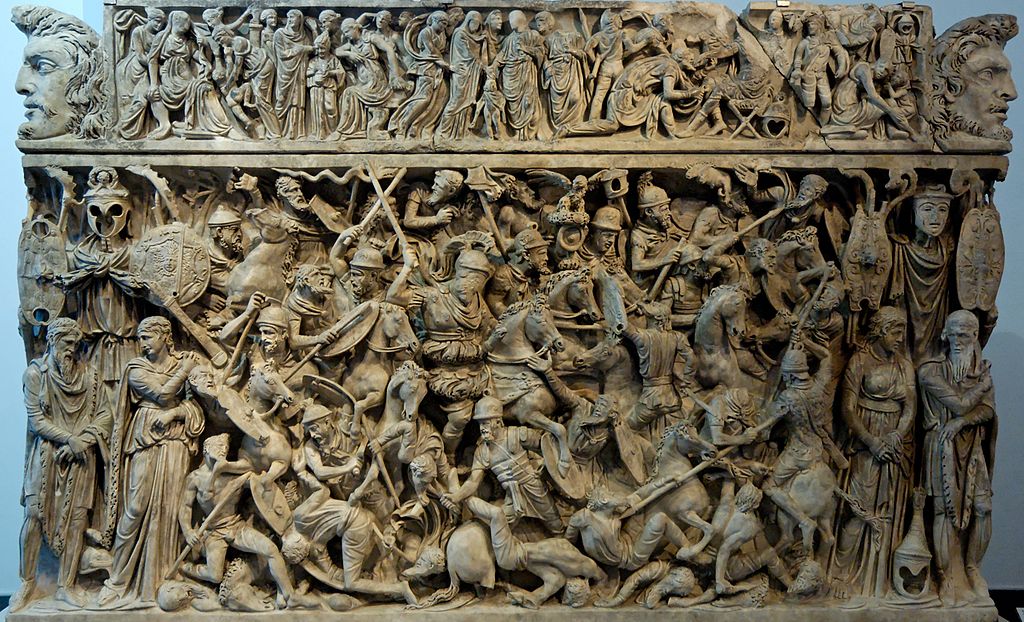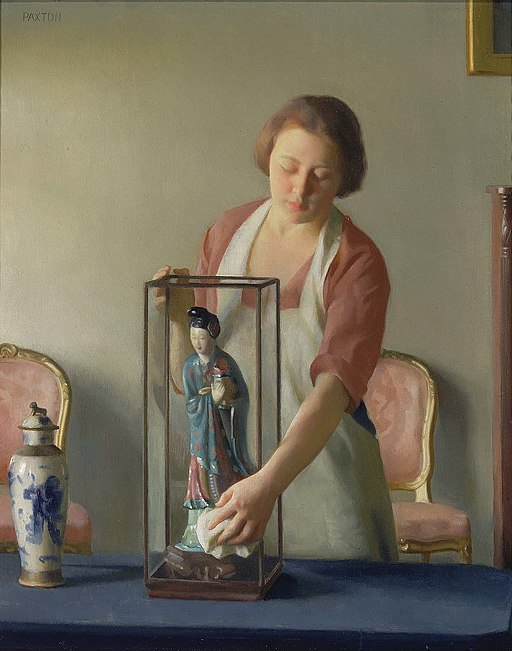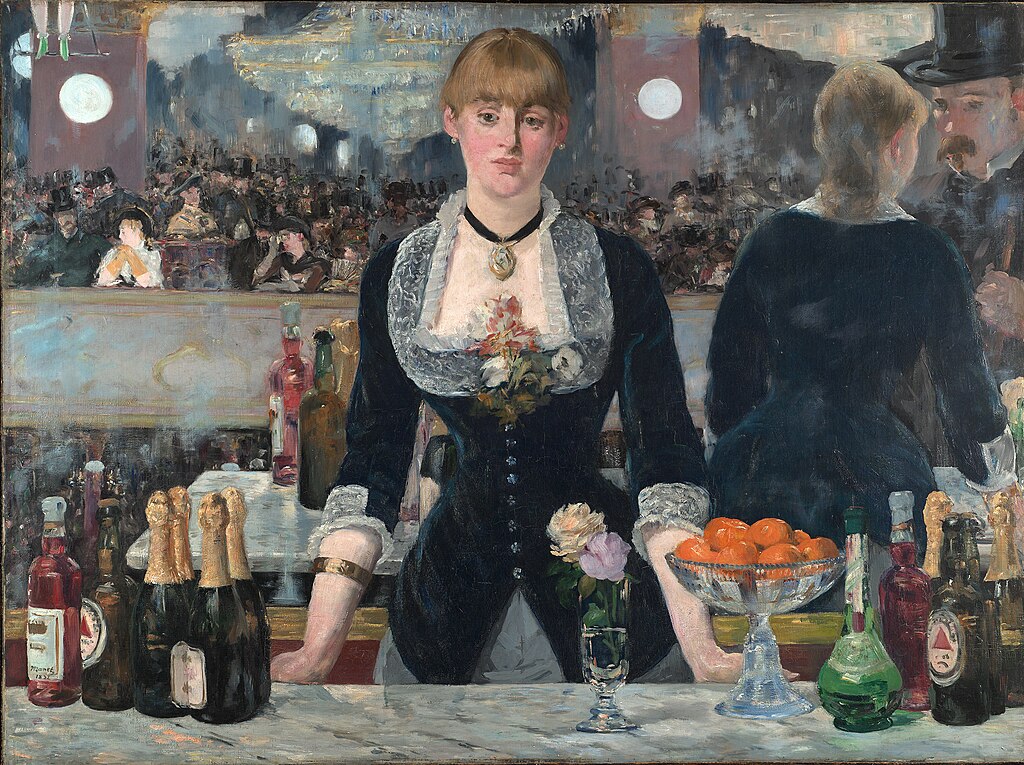
“The Arcadian Shepherds” by Nicolas Poussin depicts a pastoral scene with idealized shepherds from classical antiquity gathered around a tomb.
The painting’s original title was “Et in Arcadia ego”, which translates to “Even in Arcadia; there am I”. The traditional interpretation of this term is that “I” refers to Death, and “Arcadia” means a perfect land.
It is thus a reflection on mortality, especially the vanity of earthly life and the transient nature of all worldly goods and pursuits.
The term Arcadia symbolized pure, rural, idyllic life, far from the city. This term was used as a contrast to the many Ancient Greeks who lived in the city-states close to the sea and led the busy urban life of the polis.
Only the Arcadians, in the middle of the Peloponnese, led the ideal shepherd’s life because they had no cities.
There is, however, ambiguity in the phrase, and it is the subject of debate by historians. “Et in Arcadia ego” has been interpreted to also mean “I too [was] in Arcadia.”
This phrase implies that the person buried in this tomb once lived in Arcadia, suggesting that the person too once enjoyed the pleasures of life on earth.
This reading was common in the 18th and 19th centuries. Today the interpretation is that “ego” refers to “Death” and is the more modern interpretation.
Either way, the message was meant to set up an ironic contrast between the shadow of death and the usual idle pleasures of ancient Arcadia.
Poussin painted two versions of the subject under the same title. His earlier version, painted in 1627, is held at Chatsworth House.
This later version has a far more geometric composition, and the figures are much more contemplative. The mask-like face of the shepherdess echos the Classical “Greek profile”.
Et in Arcadia Ego
The official title of this painting “Et in Arcadia Ego” has been referenced in several literary, musical, and artistic work which include:
- The German version “Auch ich in Arkadien!” is used as the motto of his book “Italian Journey (1816–17)” by Johann Wolfgang von Goethe.
- It was the title of Book One of Evelyn Waugh’s Brideshead Revisited in 1945.
- It is the title of a dystopian poem published by W. H. Auden in 1965.
- It was the originally planned title of Tom Stoppard’s 1993 play, Arcadia.
- It begins chapter 13 of Umberto Eco’s 1988 novel, Foucault’s Pendulum.
- It is one of the titles of “The Wanderer and his Shadow”, in Friedrich Nietzsche’s Human, All Too Human (1880).
The line is traditionally understood as “Even in Arcadia [an ideal pastoral idyll], I [Death] am still present.”
Nicolas Poussin
Nicolas Poussin (1594 – 1665) was the leading painter of the classical French Baroque style, although he spent most of his working life in Rome.
Most of his works were on religious and mythological subjects painted for a small group of Italian and French collectors.
He returned to Paris for a brief period to serve as First Painter to the King under Louis XIII and Cardinal Richelieu, but soon returned to Rome and resumed his more traditional themes.
He was a major inspiration for such classically oriented artists as Jacques-Louis David, Jean-Auguste-Dominique Ingres, and Paul Cézanne.
The Arcadian Shepherds – Et in Arcadia Ego
- Title: The Arcadian Shepherds
- Formal title: Et in Arcadia ego
- French: Les Bergers d’Arcadie
- Deutsch: Hirten in Arkadien
- Artist: Nicolas Poussin
- Year: 1638
- Medium: Oil on canvas
- Dimensions: 85 cm × 121 cm (34.25 in × 47.24 in)
- Museum: Louvre
Nicolas Poussin
- Name: Nicolas Poussin
- Born: 1594 – Les Andelys, Normandy, Kingdom of France
- Died: 1665 (aged 71) – Rome, Papal States (now Italy)
- Nationality: French
- Movement: Classicism, Baroque
- Notable works:
- The Crossing of the Red Sea
- A Dance to the Music of Time
- The Arcadian Shepherds
- The Crossing of the Red Sea
- A Dance to the Music of Time
- The Arcadian Shepherds
- Spring
- Summer, or Ruth and Boaz
- Autumn
- Winter or Flood
Nicolas Poussin, Et in Arcadia Ego
The Meaning of Et in Arcadia Ego
A Tour of Paintings in the Louvre
- The Mona Lisa” by Leonardo da Vinci
- “Ruggiero Freeing Angelica” by Jean-Auguste-Dominique Ingres
- “The Valpinçon Bather” by Jean-Auguste-Dominique Ingres
- “The Turkish Bath” by Jean-Auguste-Dominique Ingres
- “Grande Odalisque” by Jean-Auguste-Dominique Ingres
- “Perseus and Andromeda” by Joachim Wtewael
- Self-portrait with Her Daughter, Julie by Louise Élisabeth Vigée Le Brun
- “The Virgin and Child with St. Anne” by Leonardo da Vinci
- “Louis XIV of France” by Hyacinthe Rigaud
- “The Massacre at Chios” by Eugène Delacroix
- “The Battle of San Romano” by Paolo Uccello
- “Virgin of the Rocks” by Leonardo da Vinci
- “The Death of Sardanapalus” by Eugène Delacroix
- “Psyche Revived by Cupid’s Kiss” by Antonio Canova
- “Liberty Leading the People” by Eugène Delacroix
- “The Arcadian Shepherds” by Nicolas Poussin
- “The Lacemaker” by Johannes Vermeer
- “The Money Changer and His Wife” by Quentin Matsys
- “The Fortune Teller” by Caravaggio
- “Portrait of Baldassare Castiglione” by Raphael
- “Charles I at the Hunt” by Anthony van Dyck
- “An Old Man and his Grandson” by Domenico Ghirlandaio
- “Vulcan Presenting Venus with Arms for Aeneas” by François Boucher
- “La belle ferronnière” by Leonardo da Vinci
- Self-Portrait by Élisabeth Sophie Chéron
- The Four Seasons by Nicolas Poussin
- “The Death of Marat” by Gioacchino Giuseppe Serangeli after Jacques-Louis David
- “Oath of the Horatii” by Jacques-Louis David
- “The Coronation of Napoleon” by Jacques-Louis David
- “Portrait of the Elector John Frederic the Magnanimous of Saxony” by Lucas Cranach the Elder
- “Leonidas at Thermopylae” by Jacques-Louis David
- “Entry of Alexander into Babylon” by Charles Le Brun
- The Raft of the Medusa by Théodore Géricault
Poussin’s Arcadian Vision: Search for the Golden Age
~~~
“Of all lies, art is the least untrue.”
– Gustave Flaubert
~~~
Photo Credit: 1) Nicolas Poussin [Public domain]
Popular this Week








 Sponsor your Favorite Page
Sponsor your Favorite Page SEARCH Search for: Search Follow UsJoin – The JOM Membership Program
Sponsor a Masterpiece with YOUR NAME CHOICE for $5
Share this:
- Tweet
